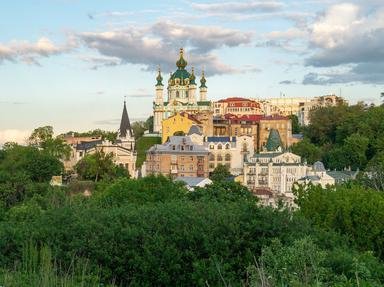Quiz Answer Key and Fun Facts
1. Cucuteni-Trypillia culture flourishes
2. Founding of the Greek colony of Panticapaeum
3. Flourishing of the Chernyakhov culture, dominated by the Greuthungi Goths
4. Founding of Kyiv by the Varangians
5. Kyivans defeat the Khazars decisively
6. Volodymyr the Great gets baptized
7. Kyiv is sacked by the Mongols
8. Cossack Hetmanate and Swedish forces are beaten in Poltava
9. Holodomor devastates the Ukrainian lands
10. On the orders of Vladimir Putin, Russia launches a full-scale invasion of Ukraine
Source: Author
DeepHistory
This quiz was reviewed by FunTrivia editor
ponycargirl before going online.
Any errors found in FunTrivia content are routinely corrected through our feedback system.
